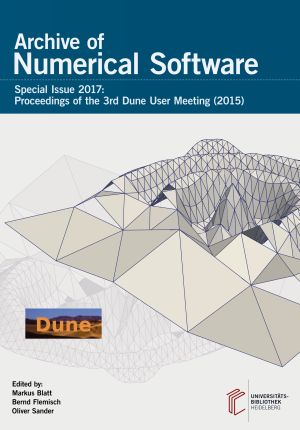
How to Cite
License

This work is licensed under a Creative Commons Attribution-ShareAlike 4.0 International License.
Identifiers
Published
Proceedings of the 3rd Dune User Meeting (2015)
Archive of Numerical Software - Special Issue 2017
Dune, the Distributed and Unified Numerics Environment, has been under continuous development for more than 13 years. Several European institutions participate in this development, and over time, a substantial user community has evolved. In order to establish and foster personal contacts within the community as well as between users and developers, a first Dune User Meeting was held in Stuttgart in 2010, followed by a second one that took place in 2013 in Aachen. In 2015, the third Dune User Meeting was held in Heidelberg from 28th to 29th of September. More than 30 users and developers from five European countries attended, presented Dune-related work and engaged in lively discussions. Ten presentations resulted in contributions to these proceedings.


